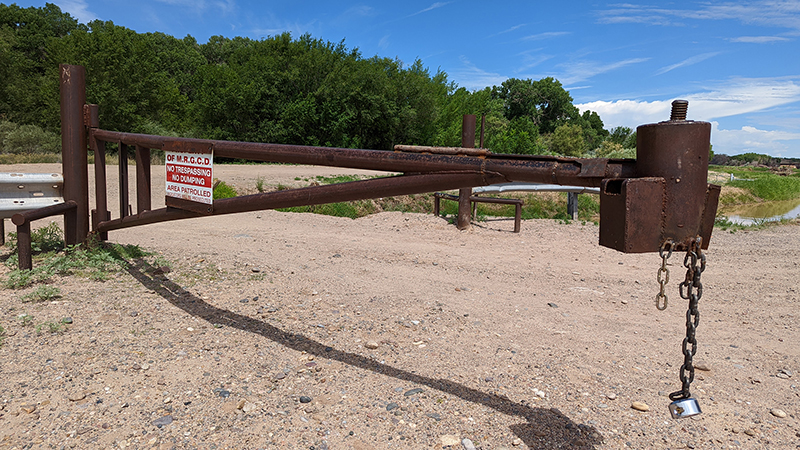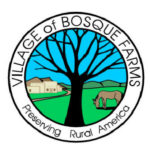Some people think they have unrestricted, unfettered access to local ditchbanks. They would be wrong.
Warm weather has drawn people on off-highway vehicles to ditchbanks throughout Valencia County like flies, and officials with the Middle Rio Grande Conservancy District say it has to stop.
“(Ditchbanks) are not maintained for general vehicular traffic and should not be considered as roadways,” said MRGCD Chief Operating Officer Eric Zamora. “As for limiting access, MRGCD does have the right to limit public access for purposes other than those permitted by policy and statute.”
The district is charged with maintaining the irrigation ditches throughout its jurisdiction that deliver water to farmers.
“There are various ways MRGCD takes maintenance responsibility for the ditches and drains. In some cases, we own the land in fee. In other cases, we have easements where we do not own the land but have maintenance responsibilities in agreement with the adjoining land owners,” he said. “This is a very simplified explanation of a much more complex and on-going discussion. Regardless, the ditchbanks are for irrigation use, primarily.”
While the district is always concerned about damage to its facilities, district CEO Jason Casuga says the biggest issue the district has with unauthorized motorized vehicles on the ditchbanks is the legal liability those activities bring.
“Right now, we are in active litigation because a (juvenile) was driving on the ditchbank and got into a wreck. Now (the family) is viewing MRGCD as having responsibility,” Casuga said. “They are asking if we had speed limit signs, stop signs, guardrails. Our facilities are made to do what they do — deliver water and drainage. We live in a very litigious society, and, we, as a district and the taxpayers of the district, pay the price.”
Casuga said while the district has a long history of not allowing vehicles on the ditchbanks unless authorized, recreational, unauthorized use has grown significantly in the last 20 years.
“Now, it’s not an exception. They are all over the place,” he said. “The further in you go into the system, the less recreating you see and more working farmers.
“The nearer the urban areas, you get folks using it as a playground and not the purpose it’s intended, then asking the district to be responsible when they make a mistake.”

Julia M. Dendinger | News-Bulletin photo
Gates accessing the Middle Rio Grande Conservancy District’s ditchbanks are typically closed and locked, with only law enforcement, emergency responders and farmers and irrigators with permits allowed to use them. They were open during the Fourth of July weekend to allow local law enforcement officers to patrol the ditches and enforce the MRGCD policy barring recreational use of off-highway vehicles on the ditchbanks.
The only people allowed to have motorized vehicles on MRGCD ditchbanks are the district’s own employees, law enforcement officers, emergency service providers and farmers and irrigators who have permits from the district.
Those with permits need to have them available to show district personnel or law enforcement if they are stopped on a ditchbank, Casuga said.
“When they get the permit, they sign and are agreeing to produce that permit if asked for it,” he said.
The district has locked gates, which are supposed to prevent unauthorized access to the ditch system, but that doesn’t always slow people down.
“They’ll back a truck up and put a chain (on the gate) and just pull them out,” Casuga said.
To enforce the vehicle policy, the district has to rely on law enforcement from local jurisdictions, he said, since the state conservancy act doesn’t give the district law enforcement ability on its property.
Zamora said the district has entered into memorandums of understanding with agencies in the Albuquerque area for law enforcement on district facilities and is discussing similar arrangements with agencies in Valencia County.
To send the message that they aren’t allowed to take vehicles on the ditchbank, people just have to be cited, Casuga said.
“We have good partnerships (in law enforcement) in Albuquerque and we need to do that in the south,” he said. “People need be cited, and I think activity will go down.”
With 1,200 miles of ditchbanks in the district, Casuga said it’s no surprise people want to use the facilities to enjoy the outdoors.
“We know there’s a lot of passive use — walking, jogging, bicycles or horseback riding. We couldn’t put up enough fence to keep folks out,” the CEO said. “We are fighting the battle of damage and liability. We don’t want to prevent people from getting to the bosque.”
The district’s standard gate design allows for equestrian access, Zamora said, and they are easy enough to go over or under on foot or with a bicycle.
“We don’t want to discourage those activities,” he said. “These are not gravel roads, they are not bladed. People assume they are driving surfaces but (the ditchbanks) are not prepared for vehicular traffic. A little moisture and they get slick. We pulled two vehicles out of ditches in Albuquerque last week.”
Casuga pointed out there’s ample parking near the river bridge in Belen, which would allow people access to the bosque and the Rio Grande.
“They could walk down, find a great place to picnic and wade,” he said. “Do they have a right to get down in the river and mud bog in it? No.”
MRGCD Gate Policy
MRGCD Gate Policy FAQ
Julia M. Dendinger began working at the VCNB in 2006. She covers Valencia County government, Belen Consolidated Schools and the village of Bosque Farms. She is a member of the Society of Professional Journalists Rio Grande chapter’s board of directors.

















